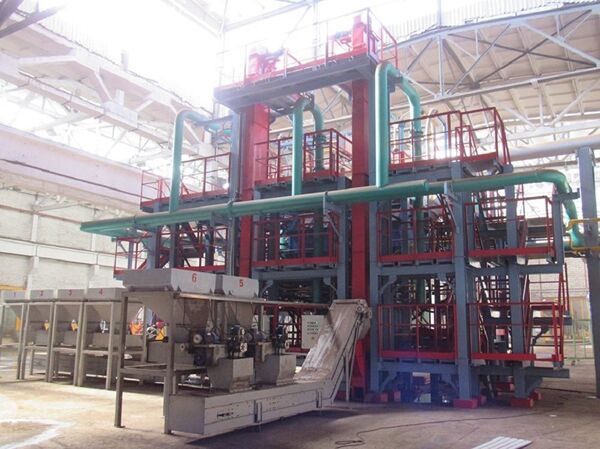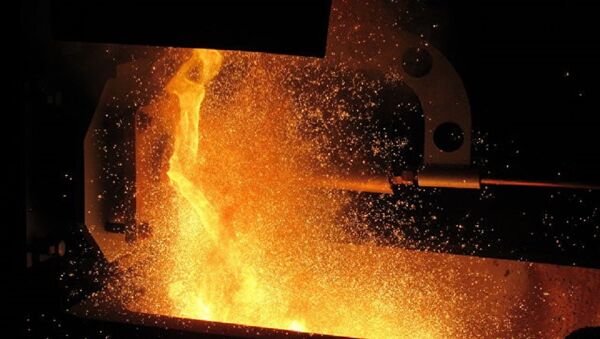A research team at the National University of Science and Technology MISIS (NUST MISIS), jointly with its industrial partner, Vtoraluminprodukt Company, has built and launched in Mtsensk, Oryol Region, a unique pilot plant bubbling reactor designed for the efficient and environmental-friendly production of iron and concentrate of non-ferrous metals from waste sludge, a spokesperson for the university press service told RIA Novosti.
Designed by NUST MISIS, the pilot facility is intended to recycle industrial waste for the subsequent production of cast iron and to produce combustible gas from carbonaceous waste. The reactor has evoked heightened interest in the Russian power industry and among producers of ferrous metals.
READ MORE: Russian Physicists Develop a New Method for Detecting Explosive Gases
Over 95% of cast iron in the world today is produced by blast-furnaces, powerful installations putting out thousands of tons of metal per day. But ordinary blast-furnaces require preprocessed high-quality raw materials, and it is economically unfeasible or downright impossible to use them for processing waste. In the meantime, Russian factories alone produce over five million tons of secondary raw materials per year.

The innovative furnace is based on the bubbling principle in which gas bubbles that rise in the melt are captured. The end goal is to recover the melt mixed composition to clean cast iron.
The bubbles that form in the process considerably accelerate the chemical reactions in the bath and intensively mix the ferrous melt and slag (metal industry waste).
According to the researchers, the new technology could spark a revolution in the iron-and-steel industry.

“We have improved the Romelt technology created at NUST MISIS back in the 1980s by dividing the reactor into melting and recovery zones. Ferrous materials, steam coal and fluxing additives are delivered to the surface of the melt bath. Coal is sucked in by slag flows to the lower zones of the bath, where it burns emitting carbon dioxide and water vapors. Next the melt flows to the recovery zone, where it is finally recovered to clean cast iron,” said Gennady Podgorodetsky, team head and director of the Innovative Metallurgical Technology Scientific and Educational Center.
According to the researchers, the most important advantage of their method is its reduced specific energy consumption (20-30% less than the best world analogs). Moreover, it can suppress the formation of substances that are particularly harmful for the environment.
A successful test of the method and subsequent mass production of the installations will result in waste-free ferrous and non-ferrous metallurgy and have a powerful positive impact on the environment.
“If requested by a customer, the composition of slag can be selected for subsequent processing into slagstone products, heat-insulating slag wool, or intermediate products for the cement industry. The installation’s unique design reduces the consumption of energy to 500 kg of coal and 500 nm of oxygen per ton of cast iron. As a result, we process junk industrial waste and obtain cast iron, commodity slag and concentrate of non-ferrous metals. Our method is waste-free. The pilot specimen is also intended to streamline the method for waste-fee gasification of numerous carbon-containing wastes, including municipal solid waste,” he said.


